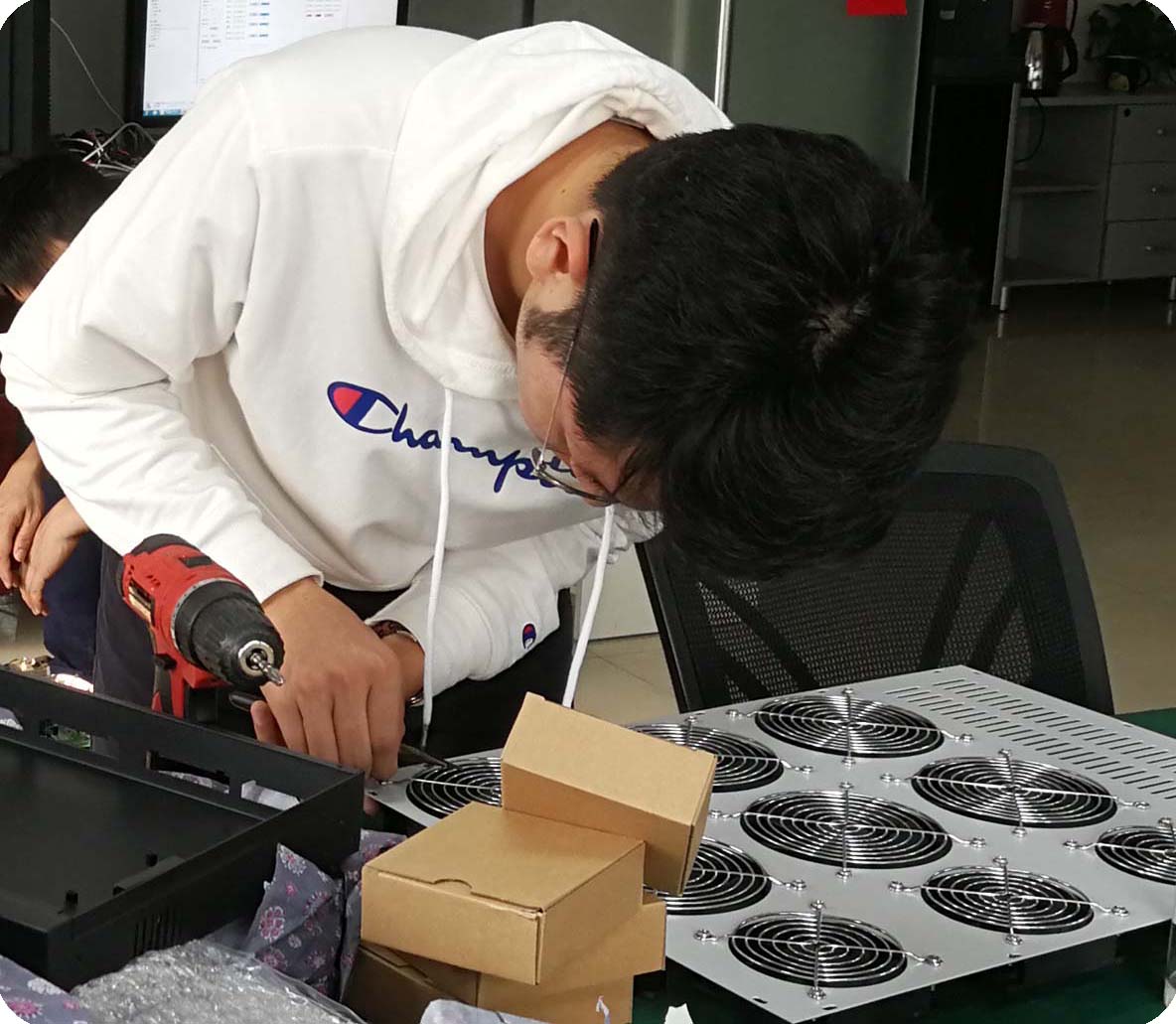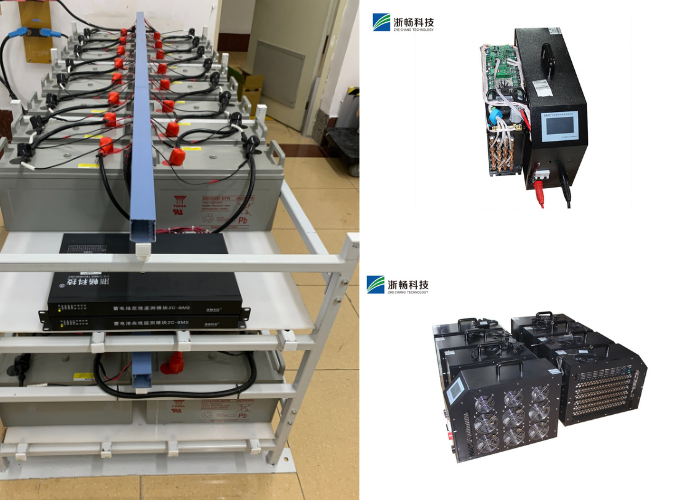How to Test a Car Battery?
Testing your car battery is an essential part of vehicle maintenance that can prevent unexpected breakdowns and extend the life of your battery. Understanding how to properly test a car battery can help you diagnose issues early, ensuring your vehicle runs smoothly. In this guide, we'll explore the methods, tools, and techniques for effectively testing a car battery, focusing on the use of a car battery tester. Whether you’re a seasoned mechanic or a novice car owner, this comprehensive guide will equip you with the knowledge you need to keep your battery in optimal condition.

Understanding Car Batteries
Before diving into the testing process, it’s crucial to grasp the fundamentals of what a car battery is and its vital role in your vehicle's operation. A car battery is a rechargeable power source specifically designed to store electrical energy for starting the engine and powering various electrical components, such as headlights, radio, and onboard computers.
Most vehicles utilize a lead-acid battery, which is composed of lead plates submerged in a sulfuric acid electrolyte solution. This design enables the battery to produce a significant amount of electrical current when needed. When the battery discharges, a chemical reaction occurs between the lead plates and the sulfuric acid, generating electricity that powers the starter motor to crank the engine.
Once the engine is running, the alternator takes over, recharging the battery while supplying power to the vehicle’s electrical systems. This cycle of discharge and recharge is essential for maintaining battery health. Understanding this process is crucial, as it allows you to recognize the signs of battery wear and failure, helping you take timely action to ensure reliable vehicle performance and prevent unexpected breakdowns.
Common Signs of Battery Issues
Recognizing the symptoms of a failing battery can save you time, money, and frustration by preventing inconvenient breakdowns. Several key indicators can signal that your battery may need testing or replacement.
One of the most noticeable signs is a slow engine crank; if your engine struggles to turn over when you start the vehicle, it may indicate a weak battery that is losing its ability to hold a charge. Additionally, if the check engine light illuminates on your dashboard, it could be a warning of various issues, including battery-related problems.
Another critical sign is swelling or bulging of the battery case. This deformation often results from overcharging or exposure to excessive heat, both of which can compromise battery performance and safety. Corrosion around the battery terminals, characterized by rust or a white powdery substance, can hinder electrical connections and may signal underlying issues that need addressing.
Lastly, the age of the battery plays a significant role; most car batteries last between 3 to 5 years. If your battery is nearing this age, it's wise to conduct regular tests to ensure it remains in good working condition. Being vigilant about these signs can help you maintain a reliable vehicle.
Testing Methods
There are several methods for testing a car battery, each varying in complexity and accuracy. Here, we’ll cover three primary methods: using a car battery tester, using a multimeter, and performing a load test.
1.Testing with a Car Battery Tester
A car battery tester is one of the most straightforward and effective ways to assess your battery’s condition. Here’s how to use one:
Step-by-Step Guide
Turn Off the Vehicle: Ensure the engine and all electrical components are turned off.
Connect the Tester:
lAttach the red (positive) lead to the positive terminal of the battery.
lConnect the black (negative) lead to the negative terminal.
Select the Testing Mode: Many car battery testers come with different modes for testing various battery types. Choose the correct mode based on your battery specifications.
Read the Display: Press the test button, and the tester will display the voltage, state of charge, and overall health of the battery.
Interpret the Results: Most testers provide a simple readout indicating whether the battery is good, weak, or needs replacement.
2. Testing with a Multimeter
If you don’t have a car battery tester, a multimeter can be a suitable alternative. Here’s how to use it:
Step-by-Step Guide
Turn Off the Vehicle: Just like with the battery tester, make sure the engine and electrical systems are off.
Set Up the Multimeter:
lTurn the multimeter dial to the DC voltage setting. Select a range that includes 12 volts (typically the 20V range).
Connect the Probes:
lAttach the red probe to the positive terminal and the black probe to the negative terminal of the battery.
Read the Voltage: Check the display. A fully charged battery should read around 12.6 volts or higher. Here’s how to interpret the results:
l12.6 V or higher: Fully charged
l12.4 V: 75% charged
l12.2 V: 50% charged
l12.0 V or lower: Discharged or needs charging
Check Voltage While Starting: To further assess the battery's health, have someone start the engine while you monitor the multimeter. A healthy battery should maintain a voltage above 10 volts during cranking. If it drops significantly, the battery may be weak.
3. Performing a Load Test
A load test evaluates the battery's performance under a simulated load, helping to identify any weaknesses that might not be apparent through voltage testing alone. Many auto parts stores offer free load testing services, or you can do it yourself with a load tester.
Step-by-Step Guide
Turn Off the Vehicle: Ensure all electrical components are turned off.
Connect the Load Tester:
lAttach the tester’s positive lead to the positive terminal and the negative lead to the negative terminal of the battery.
Apply the Load:
lFollow the tester's instructions to apply a load that matches the battery's CCA (Cold Cranking Amps) rating. This is typically done for 10 to 15 seconds.
Monitor the Voltage:
lWhile under load, the voltage should stay above 9.6 volts for a healthy battery. If it drops below this threshold, the battery may be failing.
Evaluate the Results:
lA battery that holds up under load testing is likely in good condition. If it fails, it may need to be replaced.

Maintaining Your Car Battery
Once you’ve tested your car battery and assessed its condition, proper maintenance is essential for ensuring its longevity and reliability. Here are several effective tips to help you care for your battery and keep it in optimal working order.
First, clean the terminals regularly. Corrosion can build up around the battery terminals, which can hinder electrical flow. Use a wire brush or a dedicated battery terminal cleaner to remove any rust or buildup, ensuring a solid connection.
Next, secure the battery in its tray. A loose battery can vibrate while driving, which can damage the internal battery plates and lead to premature failure. Make sure the battery is tightly fastened to prevent any movement.
If you don’t drive your vehicle frequently, it’s wise to keep it charged. Consider investing in a trickle charger or battery maintainer, which can help maintain the charge without overcharging, particularly during extended periods of inactivity.
Finally, for conventional lead-acid batteries, regularly check the fluid levels. The electrolyte solution should cover the lead plates; if it’s low, top it off with distilled water to ensure optimal performance. By following these maintenance tips, you can significantly extend your car battery's life and enhance its reliability.
When to Replace Your Car Battery
Even with proper testing and maintenance, car batteries have a finite lifespan, typically ranging from three to five years. Recognizing when it's time for a replacement is crucial for avoiding unexpected breakdowns. Here are several key indicators that suggest it may be time to replace your car battery.
Age is one of the most significant factors. If your battery is older than three to five years, it’s prudent to consider replacement, even if it appears to be performing well. Battery performance can decline gradually, making it risky to rely on an aging battery.
Another clear sign is frequent jump starts. If you find yourself needing to jump-start your vehicle often, this is a strong indication that your battery is failing. A battery that struggles to hold a charge may be nearing the end of its life.
Additionally, watch for decreased performance. Noticeable drops in performance, such as slow engine cranking when starting or dimming headlights while idling, can indicate that your battery is no longer able to supply adequate power. If you experience any of these symptoms, it's wise to have your battery tested and consider a replacement to ensure your vehicle remains reliable and safe.
Conclusion
Testing your car battery is a crucial aspect of vehicle maintenance that can prevent unexpected issues and ensure the reliability of your vehicle. By understanding the signs of battery failure and utilizing tools like a car battery tester or multimeter, you can effectively monitor the health of your battery. Regular testing, combined with proper maintenance, will help you extend the life of your battery and keep your vehicle running smoothly.
Incorporating these practices into your vehicle care routine will not only save you money on potential repairs but also provide peace of mind knowing that your vehicle is ready to perform when you need it. Whether you're preparing for a long road trip or simply want to ensure your daily driver is in top shape, knowing how to test a car battery is an invaluable skill for any car owner.
Popular Battery Tester
Popular Battery Tester
Latest News
Latest News


Get Price of Battery Tester
Get Price of Battery Tester
Address:
Floor 3, Building 1, No.1418-60, Moganshan road, Hangzhou city, Zhejiang Province, China.310015

















































